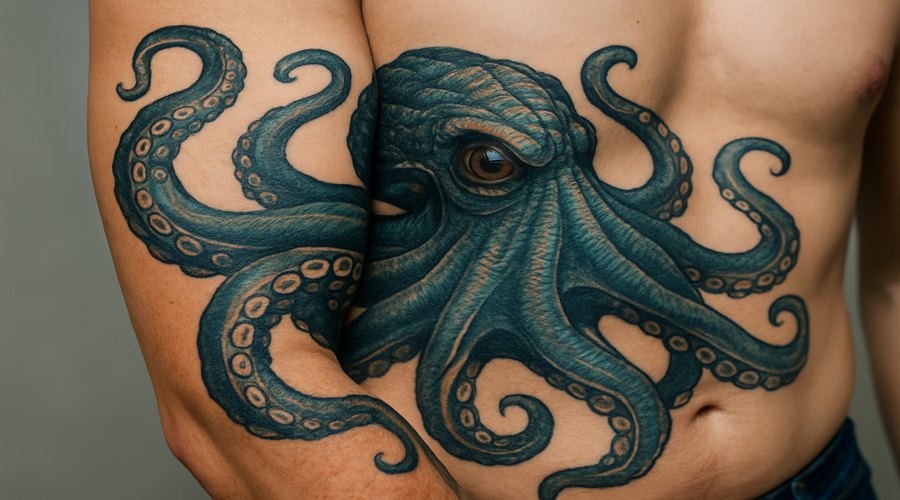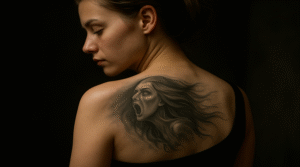Throughout history, mythical creatures have captivated human imagination, inspiring stories, legends, and countless forms of artistic expression. Among these legendary beings, the Kraken stands out as a symbol of mystery, power, and the unknown depths of the ocean. Its portrayal in art and culture has evolved over centuries, reflecting changing perceptions of the supernatural and nature’s might.
In recent years, the influence of mythical creatures like the Kraken has extended into the realm of body modification. From intricate tattoos to elaborate piercings, enthusiasts celebrate these legends by incorporating them into their personal aesthetic. This fusion of myth and body art creates a compelling narrative, highlighting the enduring fascination humans have with the fantastical.
The Origin of the Kraken Myth
The legend of the Kraken originates from Scandinavian folklore, where sailors spoke of a gigantic sea monster lurking in the icy waters. Descriptions of the creature depicted it as a colossal tentacled beast capable of dragging ships into the abyss. These stories served as explanations for mysterious disappearances at sea and the terrifying power of the ocean’s depths.
Over centuries, the myth spread across Europe, evolving into an icon of maritime fear and wonder. Artists and writers began portraying the Kraken as a symbol of nature’s unspeakable power, often emphasizing its gigantic size and destructive capabilities. This myth became a cultural touchstone, inspiring works across various media.
In the modern era, scientific discoveries about colossal squids and other deep-sea creatures lend a scientific curiosity to the legend. While no definitive evidence supports the existence of a monster like the Kraken, its myth persists, fueled by storytelling and the human imagination of the ocean’s mysteries.
Symbolism and Cultural Significance
The Kraken has come to symbolize more than just a monster; it embodies themes of chaos, fear, and the unknown. Its portrayal in art often reflects mankind’s fears of nature’s uncontrollable forces and the mysterious depths of our surroundings. The creature’s tentacles and monstrous form evoke the idea of primal power lurking beneath the surface.
Across cultures, the Kraken has also become a metaphor for overwhelming adversity and the seemingly insurmountable challenges one faces. Artists utilize the creature to express feelings of being overwhelmed or controlled by external forces. Its mythic status makes it a compelling motif to explore human psychology and collective fears.
Furthermore, the Kraken has a romanticized appeal, representing rebellion against the ordinary or the constraints of society. Its enigmatic nature invites a sense of adventure and exploration, inspiring artists to reinterpret it in ways that evoke awe and curiosity rather than terror. This duality makes the Kraken a versatile subject in art and body modification.
Artistic Depictions Through the Ages
During the Age of Exploration, the Kraken appeared in maritime paintings and maps, often depicted as a monstrous tentacled creature attacking ships. These early artistic representations aimed to warn sailors of the dangers lurking in the uncharted waters. Artists focused on exaggerating its size and ferocity to emphasize the peril of venturing into the unknown.
In the 19th and 20th centuries, literature and visual arts reimagined the Kraken as a symbol of natural power and mystery. Poets like Alfred Lord Tennyson and writers such as Jules Verne incorporated the creature into their stories, highlighting its mythic qualities. Illustrators captured the creature with dynamic tentacles swirling around ships, emphasizing chaos and awe.
Contemporary artists reinterpret the Kraken through modern mediums like digital art, sculptures, and tattoos. These depictions often blend realism with fantasy, creating more personalized and detailed representations. The creature’s fearsome yet fascinating image continues to inspire new generations of artists.
The Kraken in Modern Popular Culture
Today, the Kraken is a prominent figure in movies, video games, and literature. Films like “Clash of the Titans” and “Pirates of the Caribbean” depict the creature as an unstoppable force of nature, emphasizing its formidable nature. Its appearance in pop culture has cemented its status as an iconic monster within modern storytelling.
Video games and comics also harness the Kraken’s myth, portraying it as a powerful boss or mythical figure that challenges heroes. These representations often amplify its size and destructive potential, reflecting contemporary entertainment’s love for epic battles and monsters. The creature’s mystique continues to attract audiences worldwide.
In addition to entertainment, the Kraken’s image has permeated fashion and body art. Tattoos featuring tentacles, inked in intricate designs, symbolize strength, mystery, and rebellion. Many enthusiasts see the Kraken as a way to embody the creature’s legendary traits, forging a personal connection to its mythic power.
Body Modification Inspired by the Kraken
The influence of the Kraken extends vividly into body modification, where artists and enthusiasts incorporate tentacles and oceanic themes into their tattoos. These designs often feature highly detailed tentacles wrapping around limbs or across the back, creating a sense of movement and chaos. Such tattoos symbolize strength, resilience, and the mysterious depths within oneself.
Piercing art also draws inspiration from the Kraken’s tentacles, with some individuals opting for stretch piercings or multiple, interconnected piercings that mimic the creature’s sprawling limbs. These modifications underscore a desire to express individuality and a fascination with mythic archetypes. The aesthetic is both striking and symbolic of embracing the primal and the unknown.
More broadly, body modification enthusiasts often choose designs and modifications that reflect their personal connection to the myth of the Kraken. Whether as a statement of power, rebellion, or curiosity about the oceanic abyss, these artistic choices serve as a form of storytelling. Each piece or modification helps build a narrative of personal strength tied to mysticism and legend.
Techniques and Trends in Oceanic Myth Tattoos
Modern tattoo artists employ a variety of techniques to bring Kraken-inspired designs to life. Realism-focused shading and detailed line work create lifelike tentacles that seem to crawl across the skin. Watercolor techniques add a dynamic, fluid background, reminiscent of the ocean’s depths. These methods emphasize movement and depth, key aspects of oceanic themes.
Color trends have shifted toward deep blues, teals, and dark purples, capturing the mystique of the sea and the creature’s otherworldly presence. Some artists incorporate metallic inks or UV-reactive pigments to add glowing effects, enhancing the creature’s mystical aura. These innovations help translate myth into a vivid body narrative.
As the popularity of myth-inspired body art grows, so does the diversity of designs. Some prefer minimalistic, stylized tentacles wrapping around specific body parts—while others opt for large, full-back murals. The trend continues to evolve, driven by a desire for originality and a deep connection to mythic stories. These tattoos are increasingly seen as symbols of personal empowerment and connection to the ocean’s primal energy.
The Cultural Impact of Kraken-Inspired Body Art
Kraken-themed body art has become a cultural statement, representing individuality, resilience, and fascination with the ocean’s mysteries. For many, these tattoos serve as a badge of identity, signaling their love for myth, adventure, and the natural world. They facilitate a visual storytelling that links personal experience to legendary stories.
Within communities of body art aficionados, Kraken tattoos foster a sense of shared heritage and exploration. They symbolize a connection to the sea and its endless secrets. These designs often serve as conversation starters, allowing wearers to share their passions and personal narratives rooted in mythology.
Moreover, such body modifications challenge conventional beauty standards and societal expectations. By choosing to etch a mythic creature onto their skin, individuals embrace their uniqueness and reject conformity. The ongoing cultural impact ensures that mythical themes like the Kraken continue to inspire creativity and personal expression around the world.






